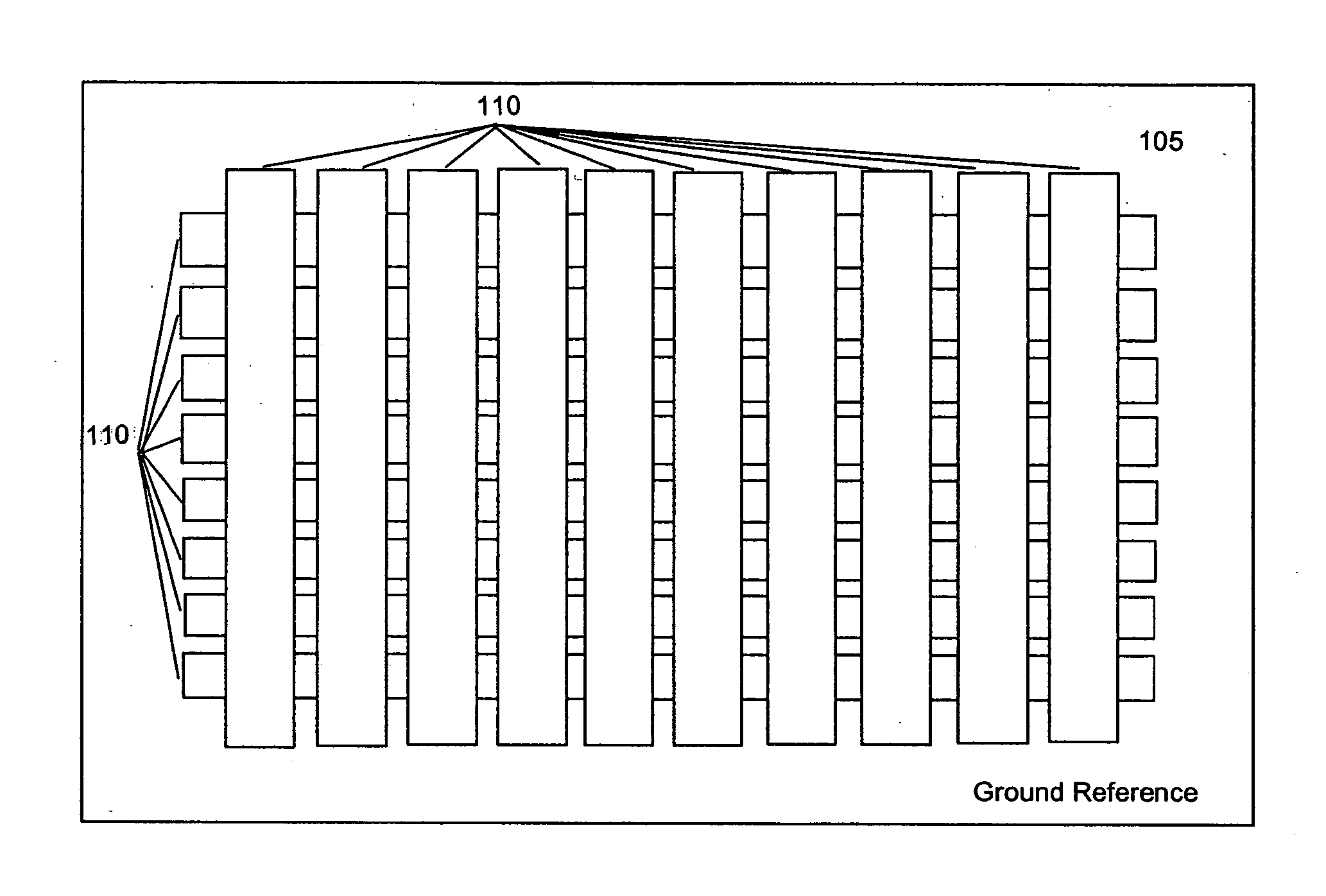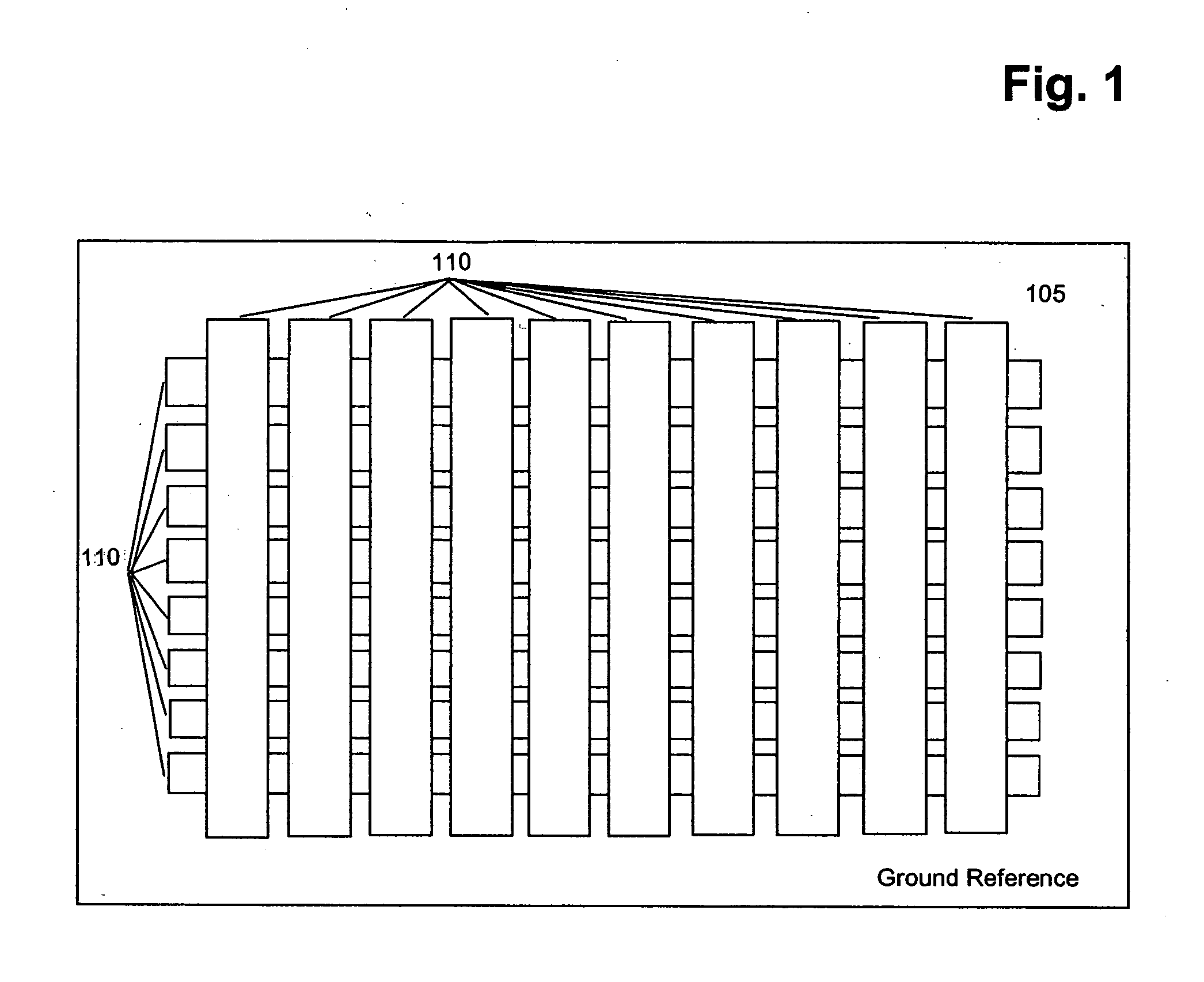Trackpad sensitivity compensation
a trackpad and sensitivity compensation technology, applied in the field of electronic input devices, can solve the problems of trackpads not being able to detect the presence of fingers, parasitic capacitances of arrays, etc., and achieve the effect of increasing the sensitivity of the sensor circuit and increasing the sensor's sensitivity to the presence of fingers
- Summary
- Abstract
- Description
- Claims
- Application Information
AI Technical Summary
Benefits of technology
Problems solved by technology
Method used
Image
Examples
Embodiment Construction
[0033] I. Introduction
[0034] One embodiment of the invention takes the form of a device compensating for a loss in sensitivity of a sensor, such as a trackpad. The device may be standalone, integrated with the trackpad itself, or within the associated integrated circuit designed to measure relative electrode capacitances.
[0035] The embodiment generally employs a current source to negatively compensate for the current available to charge at least one capacitor (or other storage device) in the trackpad. The functioning of the various electrodes as capacitors is discussed in more detail below. For purposes of this overview, it should be understood that the electrodes making up the electrode grid of the trackpad broadly may be viewed as two capacitors: a sense capacitor and a storage capacitor.
[0036] By negatively compensating for the current charging the storage capacitor, the sensitivity of the trackpad may be enhanced. A “negative compensation” of a current, as used herein, is equ...
PUM
 Login to View More
Login to View More Abstract
Description
Claims
Application Information
 Login to View More
Login to View More - R&D
- Intellectual Property
- Life Sciences
- Materials
- Tech Scout
- Unparalleled Data Quality
- Higher Quality Content
- 60% Fewer Hallucinations
Browse by: Latest US Patents, China's latest patents, Technical Efficacy Thesaurus, Application Domain, Technology Topic, Popular Technical Reports.
© 2025 PatSnap. All rights reserved.Legal|Privacy policy|Modern Slavery Act Transparency Statement|Sitemap|About US| Contact US: help@patsnap.com



